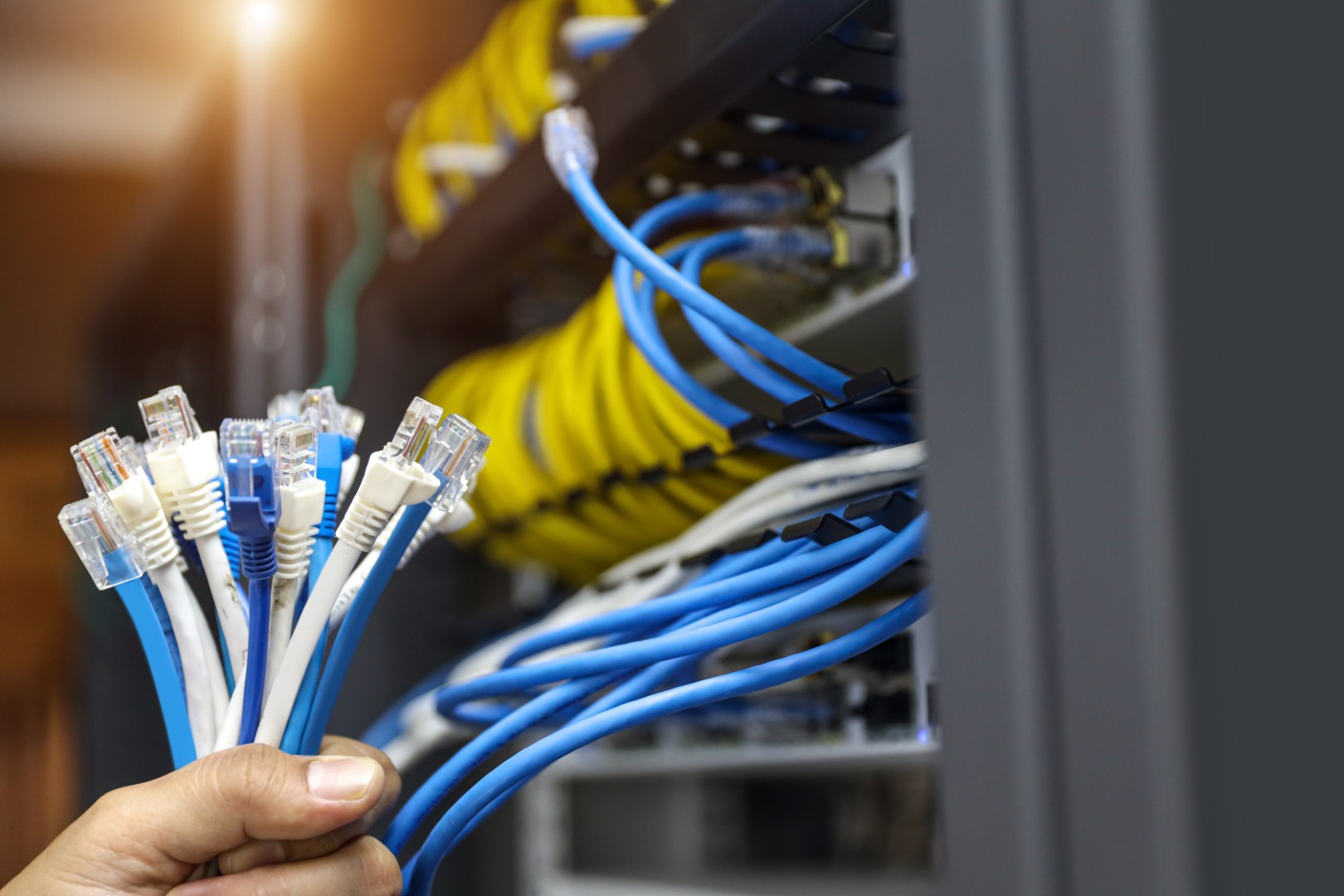In today’s digitally connected world, seamless and reliable internet connectivity is crucial for both work and play. Whether you’re running a business, working from home, or simply streaming movies on your couch, the quality of your internet connection can make all the difference. In the UK, two primary types of connectivity are commonly used: data cabling (wired solutions) and Wi-Fi (wireless solutions). Each has its strengths and weaknesses, and understanding the differences can help you make the best choice for your needs.
This editorial explores the options available in both data cabling and Wi-Fi technology, helping you decide which solution will work best for your home or business.
- Data cabling: the power of wired connections
While wireless connectivity is becoming increasingly popular, data cabling (wired connections) remains a reliable and often superior choice, particularly for those who require high-speed, uninterrupted internet access.
Ethernet (LAN) cables: the most common solution
The most common type of data cabling used in homes and businesses is Ethernet. Ethernet cables, specifically Cat 5e, Cat 6, and Cat 6a, are widely used for wired connections. These cables provide direct, high-speed connections between devices such as computers, routers, and network switches.
- Cat 5e: This is the most basic form of Ethernet cabling, supporting speeds of up to 1000 Mbps (1 Gbps) and distances of up to 100 meters. It’s suitable for most general home and office use, like browsing and streaming in HD.
- Cat 6: For those who require faster speeds, Cat 6 cables support speeds up to 10 Gbps over shorter distances (up to 55 meters). This makes them a better choice for businesses or Small Businesses with higher demands, such as online gaming or large file transfers.
- Cat 6a: If you’re looking for high-performance and future-proofing your setup, Cat 6a is an excellent option. This cable can deworkr 10 Gbps speeds up to 100 meters and is more resistant to interference, making it ideal for high-density environments or where multiple devices are connected at once.
Advantages of data cabling
- Speed and reliability: A wired Ethernet connection offers a more stable and faster connection than Wi-Fi, especially for activities like video conferencing, gaming, and streaming high-definition content.
- Low latency: Ethernet provides lower latency (or lag), which is particularly important for real-time activities like online gaming, VoIP calls, and remote work.
- Security: Wired connections are inherently more secure than wireless options, as they require physical access to the network.
Limitations of data cabling
- Limited mobility: The main drawback of wired connections is the lack of flexibility. Devices need to be physically connected to the network, which can be restrictive in large spaces.
- Installation complexity: Setting up a wired network may require running cables through walls or ceilings, which can be time-consuming and potentially costly.
- Wi-Fi: the convenience of wireless connectivity
While data cabling offers superior speed and stability, Wi-Fi has become the preferred choice for many due to its flexibility and ease of installation. Wi-Fi enables devices to connect to the internet without physical cables, providing the convenience of mobility and ease of use.
Wi-Fi standards and speed
Wi-Fi technology has evolved significantly in recent years, with the latest Wi-Fi standards providing faster speeds and greater coverage.
- Wi-Fi 5 (802.11ac): This was the previous generation of Wi-Fi, providing speeds of up to 1.3 Gbps. While still in use today, it’s slowly being replaced by Wi-Fi 6.
- Wi-Fi 6 (802.11ax): The latest generation, Wi-Fi 6, offers even faster speeds (up to 9.6 Gbps) and increased efficiency. It can handle more devices on the same network without compromising speed, making it an ideal choice for smart homes or offices with multiple devices.
- Wi-Fi 6E: Building on Wi-Fi 6, Wi-Fi 6E operates in the 6 GHz band, providing additional bandwidth and reducing congestion. It’s perfect for environments where numerous devices are constantly connected.
Advantages of Wi-Fi
- Flexibility: The primary benefit of Wi-Fi is its mobility. You can move around freely without worrying about being tethered to a cable. This is particularly advantageous in large homes or offices where running Ethernet cables everywhere is impractical.
- Ease of installation: Setting up Wi-Fi requires less effort than running cables through a building. With a wireless router, you can typically get connected quickly and easily.
- Support for multiple devices: Wi-Fi is designed to support many devices simultaneously. It’s ideal for Small Businesses or offices with smartphones, laptops, tablets, and smart devices all connected at once.
Limitations of Wi-Fi
- Speed and reliability: While Wi-Fi technology has improved, it can still be slower and less reliable than wired Ethernet connections. Performance can vary depending on the distance from the router, the number of devices connected, and interference from walls or other electronics.
- Interference: Wi-Fi signals can be affected by other devices operating on the same frequency band, such as microwaves, cordless phones, and Bluetooth devices. This can lead to slower speeds and interruptions in the connection.
- Hybrid solutions: combining data cabling and Wi-Fi
In many homes and businesses, the most effective approach is to combine both data cabling and Wi-Fi. By using Ethernet cables for high-demand devices like desktops, servers, or gaming consoles and relying on Wi-Fi for mobile devices like laptops, tablets, and smartphones, you can achieve the best of both worlds.
Powerline networking
Another option for homes or offices with limited cabling infrastructure is powerline networking. This technology uses the existing electrical wiring in your home to transmit data. Powerline adapters can be plugged into electrical outlets, offering a wired connection that extends beyond the reach of your router’s Wi-Fi signal.
Mesh Wi-Fi systems
For large homes or offices, a mesh Wi-Fi system can help extend Wi-Fi coverage throughout the space. These systems use multiple units placed around the area to create a seamless and high-performance wireless network. Mesh Wi-Fi systems are often combined with wired backhaul connections (Ethernet cables) to ensure stable and high-speed performance.
Conclusion: choosing the right option for your connectivity needs
The choice between data cabling and Wi-Fi ultimately depends on your specific requirements. Data cabling provides the best performance in terms of speed, reliability, and security, making it ideal for high-demand applications such as gaming, streaming, and business networks. However, it lacks the mobility and flexibility that Wi-Fi offers, which is the go-to choice for most home users who need a convenient, wireless connection for everyday activities.
For many, the ideal solution will be a combination of both, using wired connections where stability and performance are paramount and Wi-Fi for flexibility and ease of use. Additionally, new technologies like mesh Wi-Fi systems and Powerline adapters can bridge the gap, providing reliable wireless solutions across larger areas while maintaining some of the advantages of wired setups.
Ultimately, by assessing your needs for speed, coverage, and flexibility, you can choose the right combination of data cabling and Wi-Fi to keep your home or business connected in the most efficient and effective way.



